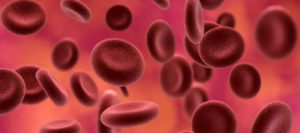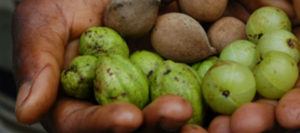Ayurveda gives lot of importance on good nutrition at every stage of child life, in order to preserve their health. As rightly said, there is no medicine like food and food alone can make people healthy. That is why food is considered as Mahabhaishajya (great medicine).
Compared to adults, a child’s energy requirement is much high, especially during infancy. It is mentioned that a child should never be kept hungry. Unfortunately; provision of special nutrient needs, during early life is complicated by the young infants’ lack of teeth and immature digestive and metabolic processes.
Pregnancy period
As long as the baby remains in the mother’s womb, the placenta takes care of the fetal nutrition. The nutritional status of child depends upon the nutritional status of mother during antenatal period. Whatever the food a pregnant lady consumes is divided into 3 parts, one part nourishes the mothers own nutritional needs, the second part supply the nutrition for breast milk secretion and the third part nourishes the fetus growing inside the womb.
Food for Children
The age classification (Vayovibhajana) in children is mainly done on the basis of food they consume as
- Ksheerapa – the children up to one year of age and main diet is milk,
- Ksheerannada – the children up to 2 years of age and on both milk and semisolid food
- Annada – the children who takes solid food as main food.
Till 6 months
For a newborn, mother’s milk is ideal. Exclusive breast milk to the baby is indicated till 6 months of age. In absence of breast milk baby can be fed with animal milk (goat or cow’s) processed with some drug and sugar to make it easy for digestion.
Or else in case of absence of breast milk, a wet nurse (Dhatri) can be appointed who feed her breast milk to the baby.
After 6months
Six months onwards, there is a gap between total energy needs and energy provided by breast milk. This gap increases as the child gets older. The child’s digestive system also gets ready for semi/solid foods. At this age they need to be supplemented with some extra nutrition. Weaning/ complementary feeding gives the child other nutritious foods in addition to breast milk. These should complement rather than replace breast milk. Weaning is essential to prevent the growth faltering.
Weaning is a difficult period in infant’s life because;
- If the food supplement is not adequate in quantity and quality leads to malnutrition at an early age itself.
- Infants are learning to eat first time, so it is very important to be patient and gentle with child.
- Unhygienic feeding practices may result in entrance of infections and diarrhea which again a cause for malnutrition in children.
- Infants are having weak digestive power so suitable feeds need to be selected
- Early weaning (before 4 months) is often due to ignorance and leads to contamination and infection due to the unhygienic preparation. Dilute weaning foods also lead to malnutrition. Late weaning leads to growth faltering and malnutrition. The child is likely to become ill with different nutritional disorders.
- After 6 months of age, gradually introduce semisolid food to the baby. Introducing fruit juices is recommended when the child is about 6 months age called as phalaprashana samskara. Human milk is deficient in vitamin C, D and iron, and these are to be substituted to the infants. Fruit juices are rich sources of these nutrients. Fruits generally relieve constipation and are agnideepaka (increases the digestive capacity) also. Thus introduction of fruit and fruit juices help in supplementing the extra nutrition to the baby at an early age itself.
- When the baby is around 10 months of age, and has tooth eruption, start with semisolid mashed foods. This introduction of solid food is called as Anna Prashanasamskara and is performed religiously. During this samskara smashed food is fed to the child 3 to 5 times in little quantity.
- The diet given to the child should be satmya (congenial), laghu (light) and hitakara (good to the body) to the child.
- Breast milk should continue to be the main food of the baby, preferably till two years of age even when weaning is started. To minimize interference with normal breast feeding, weaning foods should be given between the breast feeds. This is important as the first two years is a period of rapid brain growth and breast milk contains factors essential for brain growth and development.
Criteria of Complementary foods
- Stomach of young children is small, thin foods and liquids fill it quickly, so consistency or thickness of the food makes a big difference to how well that food meets the young child’s energy needs.
- A food of thick consistency helps to fill the energy gap. A food that easily stays on spoon is right consistency.
- First food should be soft, homogenous, smashed, strained and bland in taste. When infants accept soft food then different taste, consistency, thickness and varying texture can be tried.
- Mono-cereal is preferred initially followed by multicereals and cereal pulses combinations. They should be locally available, cheap, acceptable and adequate to provide all nutrients. Cereals like ragi, rice, wheat etc are good weaning foods. Cereal pulse combination is better, due to fortification of amino acids, as cereals generally lack lysine and pulses lack methionine.
- Tubers, fruits, biscuits and banana powders are also popular weaning foods.
- Addition of jaggery will increase calories and minerals. Addition of milk will increase protein and oil will increase calorie intake. Coconut milk can be added instead of cow’s milk it is rich in lauric acid, which promotes brain growth.
- The food stuffs should be freshly prepared. Precooked ready to mix cereal pulse combinations can be prepared and stored in airtight containers
- It is essential to switch over to the usual family food. By one year of age, the baby should be taking everything cooked at home. This is called ‘family pot feeding’. It can be given in a thickened and mashed form, from the family pot without adding hot spices.
Selection of complementary foods according to age
Around 6 months of age
Cereal based porridge (ragi, rice, suji etc.) enriched with jaggery / sugar, oil/ ghee and animal milk can be started. Start with 1-2 spoonfuls and gradually increase to ½ to 1 cup per day in 1 – 2 servings in addition to breast feeding. Fruit juices can also be started.
6- 9 months of age
Introduce mashed items from the family pot enriched with jaggery / sugar, oil/ ghee. Mashed rice with pulses, mashed tubers and vegetables, soups, mashed fruits; egg yolk followed by white etc can be given.
9- 12 months of age
Introduce soft food that can be chewed avoiding hot spices. Chapatti and other hard items can be made soft by adding little milk. By one year of age, the baby should be taking everything cooked at home. A one year old child should eat half of what the mother eats.
Some special complementary food preparation
ShashtikaShalyadi Yoga
Semisolid foods prepared out of old and fried shali (rice), or shashthikadhanya (specific variety of rice) are considered as good weaning food. Instead of these, powders of Yava (barley) and Godhuma (wheat) can also be used. These grains are to be soaked in water over night; husk is removed, then sundry, roast and make powder. This powder is being cooked with milk, ghee and jaggery and used for nursing the child.
Preenanamodaka (Priyalu Majjadi Modaka)
Use of specific type of weaning food preparation called modaka, which is a sweet ball, prepared by using powders of priyalamajja (Buchanania lanzan spreng.), yasthimadhu (Glycyrrhiza glabra), laja (rice pops), sitopala (sugar candy) and madhu (honey). This food preparation is a sweet bolus which will ease the palatability because generally kids like madhura rasa (sweet taste). It is mentioned in general for improving the infant’s nutritional status.
Dhatkyadimodaka
A complementary food prepared with Dhataki pushpa (Woodfordia fruticosa), Madhuka (Glycyrrhiza glabra), Sharkara (sugar candy) and Laja (rice pop) is good in children with indigestion and who suffers from repeated attacks of gastroenteritis.
Bala Bilvadi Avaleha
Bilwa (unripe fruit of Aegle marmelos), cardamom, sharkara (sugar candy), lajasaktu (rice pops). This food preparation is indicated in infants with weak digestive capacity.
Dr. Priya NK (BAMS)
Private consultant at Bangalore





